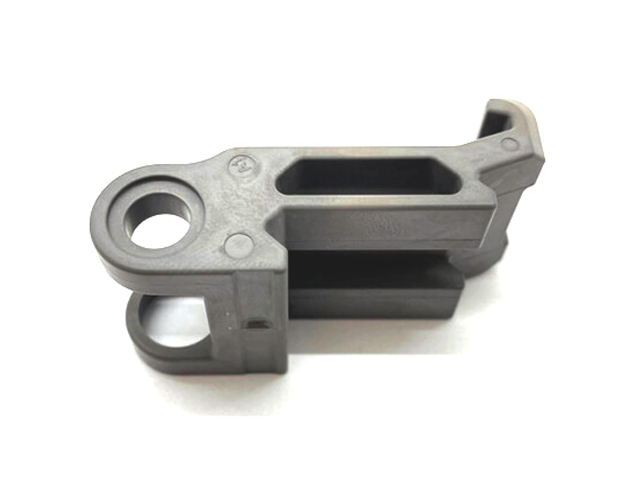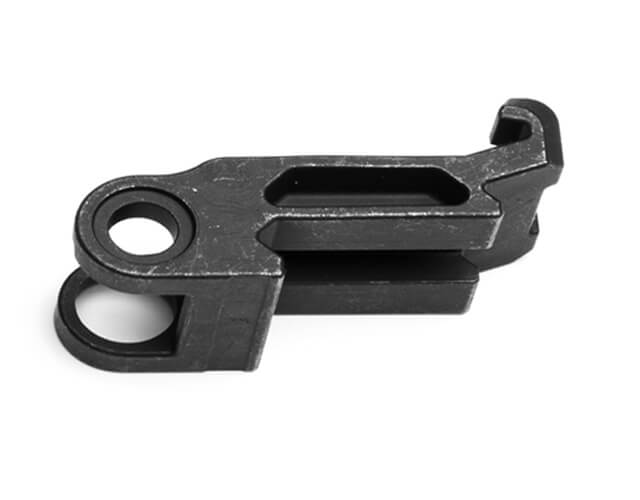Metal injection molding is a manufacturing process that combines two technologies into one, powder metallurgy with plastic injection molding. The MIM process is tailored for high volume production of small, metal components that have complex geometries and tight tolerances. Because MIM produces a near net-shape component, the process produces less material waste which in turn makes MIM very cost effective.
The metal injection molding process can manufacture a wide variety of materials and alloys. Check out our full list of available metal injection molding materials. Once a MIM material is selected, the MIM process starts in house with mixing APP’s proprietary MIM feedstock, a combination of fine metal powders and binders, such as waxes and different polymers. Once cooled, the feedstock is granulated into pellets to prepare for injection molding. APP’s proprietary feedstocks are designed for a specific shrink rate and allow for enhanced material flow and greater processing parameters. To ensure the reliability and repeatability during processing, the feedstock compounding process is tightly controlled.

Processed with a fully automated injection molding machine, the MIM feedstock is heated and injected at high speeds into a tool or mold with multiple complex cavities. Once molded, the result is called a “green part”. Due to the additional binding agents, the green part is roughly 20% larger than its final size allowing shrinkage during the debinding and sintering process.

The parts then move through the first stage debinding. The binder systems used in the formulation of MIM feedstock requires a two-step debinding process. Although there are several methods to remove binder, metal injection molding uses two primary methods to remove the binders during this stage, catalytic and solvent. Catalytic debinding uses fuming nitric acid to remove some binder, whereas a solvent debinding system soaks the green parts in a bath for several hours to remove most, but not all, of the binders to prepare for sintering. Once this process is completed the part is considered a “brown part”.

The MIM sintering stage is where the brown parts are placed in a high temperature furnace. The part is heated near its melting point, all the remaining binder is completely removed, and the metal particles are bonded together. The part then shrinks and densifies, and the final strength and geometry of the metal part is formed.

After sintering, metal parts can then be sent to additional operations to improve dimensional control, achieve tighter tolerances, increase mechanical properties, and visual appearance, such as heat treating and coating. These are called secondary operations and can be in house or contracted out. Finished MIM parts are manufactured to around 98% theoretical density of wrought metals resulting in similar mechanical properties.

Metal injection molding is a manufacturing process used to produce complex, precision metal parts. MIM is commonly used for a wide range of applications, including medical devices, firearms, automotive, electronics, aerospace, industrial equipment, consumer goods, sporting goods, fire sprinkler systems and military and defense.
Yes, MIM can produce strong and durable parts. The strength of MIM components depends on several factors, including the type of metal used, the powder size and distribution, the sintering process, and the design of the part.
Even though MIM requires expensive specialized equipment, it can be a cost-effective solution for the production of complex and high-precision metal components.
The time it takes for metal injection molding (MIM) can vary significantly based on several factors, including the complexity of the part, the size of the production run, the material used, and the specific MIM process employed. In general, for a straightforward high-volume production run of relatively simple parts, the time frame from tooling setup to final production can be a matter of weeks to a few months.
The choice of the best metal for metal injection molding depends on the specific application and the desired properties of the final part. Overall, stainless steel, particularly 17-4 PH and 316L, is a preferred metal for MIM for its excellent corrosion, strength, and durability.